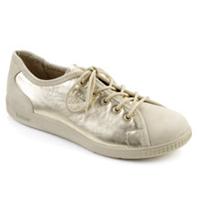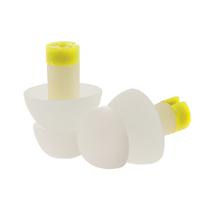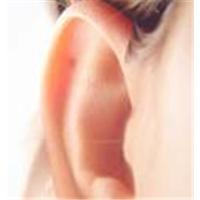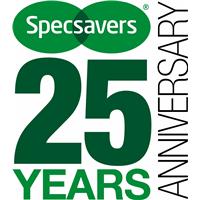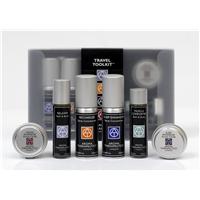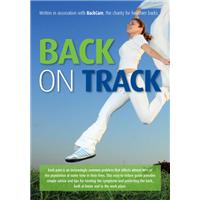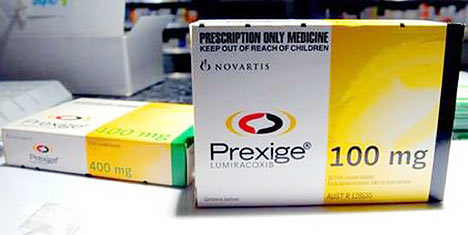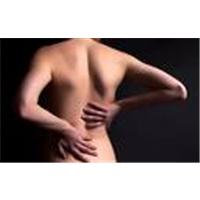
London: Eight out of ten people in the UK suffer from back pain* and more than half put their aches and pains down to gardening**, according to experts.
And those who suddenly take up gardening as a way of getting exercise*** are most at risk. So the specialist back advice website, www.backadvice.info is offering practical advice and tips on ways to garden your way to better health without letting your back take the strain.
Whether mowing the lawn, planting a flower border or painting the fence, gardening de-stresses the mind and provides a great workout for the whole body to boost all round wellbeing. Gardening can even rival jogging or aerobics as a full-body fitness booster. It works a number of different muscle groups, burns calories up to 318kcals an hour**** – and incorporates other important elements of accepted exercise regimes, such as stretching, repetition and even resistance training.
But its important to remember that gardening can be just as challenging as any other exercise and unless steps are taken to protect the body, different muscles and joints can be put under strain. To help Britons protect their backs, www.backadvice.info has some new handy health commandments that everyone should consider before reaching for the rake:
o Prepare the body just as you would with any exercise, put a little time aside before and after each gardening session to warm up and cool down. Decide on a regime and make it a habit every time you garden. Lay on your back on the floor with your legs crossed and pull the knees towards the chest with the arms to give the lower back a good stretch
o Keep pace while the satisfaction of seeing the garden looking pristine may motivate you to spend entire days digging and planting, its important not to overdo it. Divide work into manageable loads and spread this over a few days, and remember to take regular breaks use the time to re-hydrate with sips of water as this too can help stave off back pain!
o Variety is the spice of life each time you garden, consider rotating tasks so you work the whole body without putting too much strain on one set of muscles. Try five minutes of mowing and then five minutes of weeding
o Ease the strain change your position regularly to take the pressure off your back. Prolonged activities where your back is bent can weaken the muscles and leave them susceptible to injury use a mixture of positions such as sitting, crouching, kneeling and standing
o Recovery time – a nice hot bath at the end of the day, can be incredibly relaxing for the muscles (particularly if your back has been exposed to the cold)
A good nights sleep on a mattress offering full support for the back is also a must. TEMPUR Mattresses offer the body full support, keeping the spine aligned in the anatomically correct position and relieving pressure off of tired muscles and joints
o Heave ho ensuring you lift correctly – and only as much as you can handle – is key to protecting your back in the garden. If you are lifting something heavy, keep your back straight, bend from your knees and use your legs (never your back!)
Bending from the knees is also an important tip when digging remember to work the legs more than the back and bending forward from the hips not the waist to keep the back straight
www.backadvice.info is home to a host of practical advice to help individuals manage back pain on a day-to-day basis, whether at home, work or play. The site offers a wealth of information on the causes of back pain, as well as conventional and alternative treatments, preventative measures and exercises to help ease the pain. Osteopath Geoffrey Montague-Smith is available to provide professional guidance and answer any tricky questions you have about your own back pain.
Visit the site at www.backadvice.info . For more information about TEMPUR products, visit www.tempur.co.uk
References:
* www.gnn.gov.uk
** www.news.bbc.co.uk
***www.thisislondon.co.uk
**** www.eatwell.gov.uk
Notes to editors:
1. Back on Track Guide
o A free consumer advice, Back on Track, to help those with back pain to combat the symptoms is available by calling: 08000 111081 or emailing: backpainadvice@tempur.co.uk
2. About TEMPUR
o TEMPUR Products conform to and support the individual user by evenly distributing body weight
o The basis for the TEMPUR pressure relieving material was originally developed by NASA to protect astronauts against G Forces during lift off and re-entry to the earth’s atmosphere. Today TEMPUR is the only producer of mattresses and pillows worldwide to be endorsed by NASA and certified by the Space Foundation
o TEMPUR has more than 70,000 medical customers including hospitals, physiotherapists, and medical practitioners
o A trial at the Institution for Clinical & Physiological Research at the Lillhagen Hospital, Gothenburg, Sweden tested 23,000 patients over an eight year period of home and clinical use of the TEMPUR Mattress and Pillow. Patients suffered less pain, experienced enhanced deep sleep, and an 83% reduction in tossing and turning when using TEMPUR Products
o A whole host of celebrities are now claiming they have found the perfect sleeping partner their TEMPUR Mattress including George Michael, Jane Seymour, Paris Hilton, The England Rugby Team, Paul McCartney, David Blaine, The Ozbournes, Kyran Bracken, Claire Sweeney, Charlie Dimmock, Susan Hampshire and Noel Gallagher
o TEMPUR Mattress prices start from £675, and TEMPUR Pillows are priced from £74.95. For more information about TEMPUR Products, call 08000 111081 or visit www.tempur.co.uk


